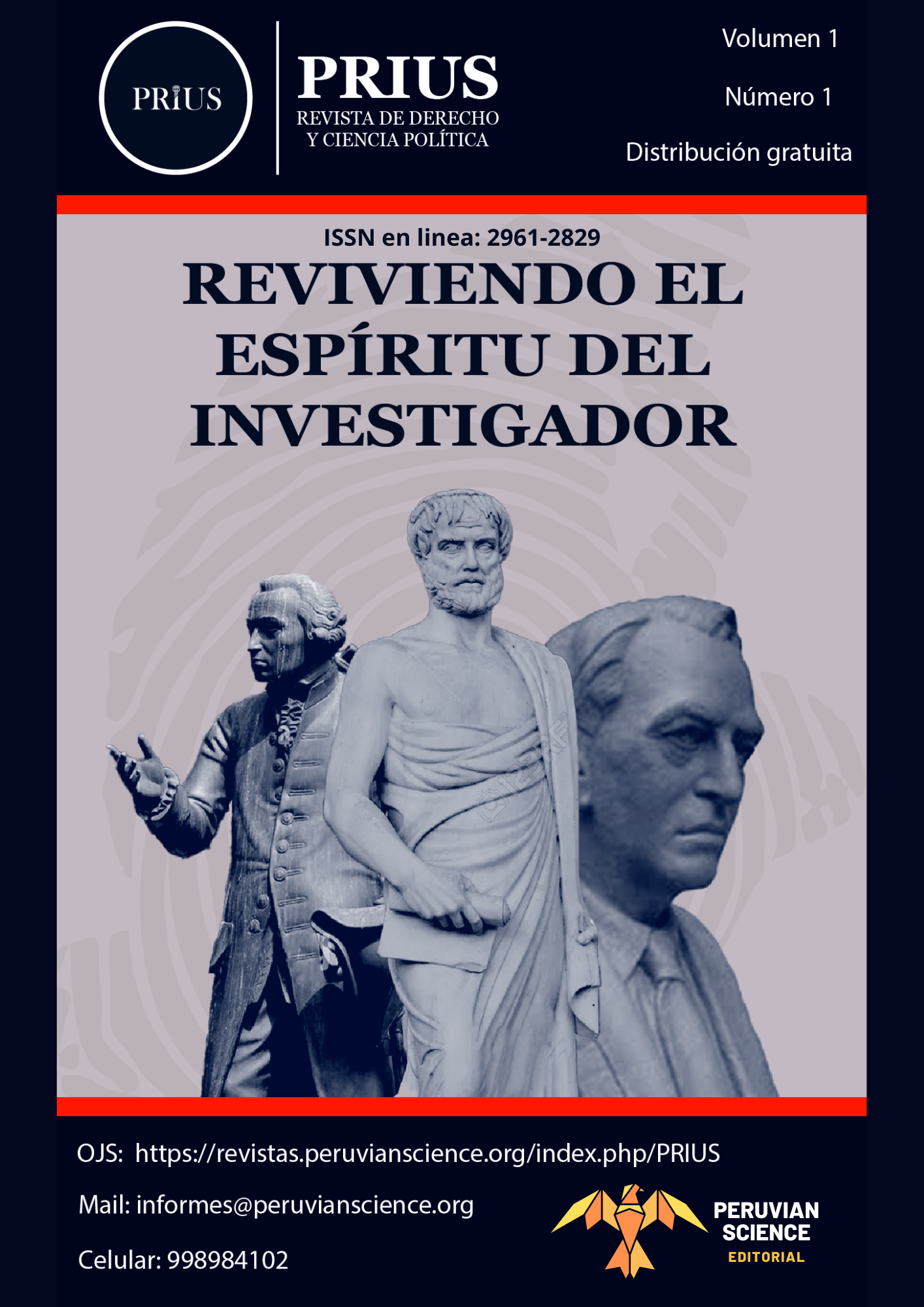El enemigo en el Tribunal de la Inquisición
DOI:
https://doi.org/10.5281/zenodo.11186545Palabras clave:
Inquisición, emergencia penal, derecho penal, amenaza, enemigoResumen
La Inquisición ha tenido, desde la historiografía tradicional, cierta fama de arbitraria, y cruenta en sus condenas. En este sentido, desde el estudio de su origen, se ha postulado la tesis de que las funciones del Santo Oficio nacieron en un contexto de “emergencia penal”, como señala el prólogo de Cavallero en su Justicia Inquisitorial, por ejemplo. Es así como se puede entender de esta manera, dada la naturaleza mostrada de este tribunal, que es el precursor de un fenómeno moderno: el derecho penal del enemigo, debido a la prioridad para apartar la amenaza externa (el enemigo), por su nula garantía de que cumpla norma alguna. Sin embargo, ¿son todos estos paralelismos ciertos o se están extralimitando tales análisis? Este artículo busca responder lo que se puede considerar como antecedente o no del derecho penal del enemigo en el Santo Oficio.
Descargas
Citas
Castellano, Danilo. Introducción a la Filosofía de la Política. Madrid: Marcial Pons, 2020.
Cavallero, Ricardo. Justicia Inquisitorial, El sistema de justicia criminal de la Inquisición Española. Buenos Aires: Editorial Planeta, 2003.
Contreras, Jaime. Historia de la Inquisición Española (1478 – 1834) Herejías, delitos y representación. Madrid: Arco Libros, 1997.
Charles Lea, Henry. Historia de la Inquisición Española, Vol. I. Madrid: Boletín Oficial del Estado, 2020.
Deschner, Karlheinz. Historia Criminal del Cristianismo, Los orígenes, desde el paleocristianismo hasta el final de la era constantiniana. Barcelona: Ediciones Martínez Roca, 1990.
Dip, Ricardo. Los Derechos Humanos y el Derecho Natural. De cómo el hombre imago Dei se tornó imago hominis. Madrid: Marcial Pons, 2009.
Dumont, Jean. Proceso contradictorio a la Inquisición Española. Madrid: Ediciones Encuentro, 2000.
D’Ors, Álvaro. Nueva Introducción al Estudio del Derecho. Madrid: Civitas Ediciones, 1999.
Galvao de Sousa, José. La Representación Política. Madrid: Marcial Pons, 2011.
García Cavero, Percy. Derecho Penal. Parte General. Lima: Ideas Solución Editorial, 2019.
García Olmo, Miguel. Las razones de la Inquisición Española, Una respuesta a la Leyenda Negra. - Córdoba: Editorial Almuzara, 2009.
Iturralde, Cristián. La Inquisición, un tribunal de misericordia. Buenos Aires: Ediciones Parresía, 2019.
Jakobs, Gunther y Cancio Meliá, Manuel. Derecho Penal del Enemigo. Madrid: Civitas Ediciones, 2003.
Jakobs, Gunther y Polaino-Orts, Miguel. Terrorismo y Estado de derecho. Bogotá: Universidad Externado de Colombia, 2009.
Jakobs, Gunther y Polaino-Orts, Miguel. Persona y Enemigo. Teoría y Práctica del Derecho Penal del Enemigo. Lima: Ara Editores, 2011.
Jescheck, Hans-Heinrich y Weigend, Thomas. Tratado de Derecho Penal. Parte General. Lima: Instituto Pacífico, 2014.
Junco, Alfonso. Inquisición sobre la Inquisición. México D.F.: Editorial Jus, 1990.
Kamen, Henry. “Cómo fue la Inquisición”, Revista de la Inquisición: (Intolerancia y derechos humanos), n. 2 (1992): 11 - 22.
Kamen, Henry. La Inquisición Española. Barcelona: Editorial Planeta, 2013.
Martín de la Hoz, José. Inquisición y confianza. Madrid: Homo Legens, 2010.
Pulido Serrano, Juan y Childers, William (dirs.). La Inquisición vista desde abajo. Testificaciones de gente corriente ante el Santo Oficio. Madrid: Iberoamericana, 2020.
Sáenz, Ramiro. La Inquisición Medieval. Una Institución de Cristiandad. Guadalajara: Editorial APC, 2005.
Schmitt, Carl. El Concepto de lo Político. Madrid: Alianza Editorial, 2009.
Schmitt, Carl. On the Three Types of Juristic Thought. Westport: Praeger, 2004.
Zaffaroni, Raúl. El enemigo en el derecho penal. Madrid: Dykinson, 2006.
Zaffaroni, Raúl. La Cuestión Criminal. Buenos Aires: Editorial Planeta, 2012.
Publicado
Cómo citar
Número
Sección
Licencia
Derechos de autor 2023 PRIUS - Revista de Derecho y Ciencia Política

Esta obra está bajo una licencia internacional Creative Commons Atribución-NoComercial-SinDerivadas 4.0.
PRIUS aplica la licencia Creative Commons Attribution (CC BY) a los artículos y otros trabajos que publicamos. Por lo tanto, cada manuscrito enviado para que la revista lo publique será procesado bajo la licencia CC BY. El uso de esta licencia se condice con la política de acceso abierta de la revista, dado que esta es la licencia más abierta considerada "el estándar de oro" del open access. Se puede revisar el resumen de esta licencia en: https://creativecommons.org/licenses/by-nc-nd/4.0/
















